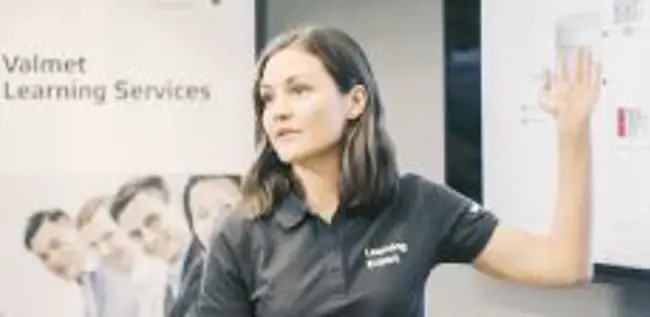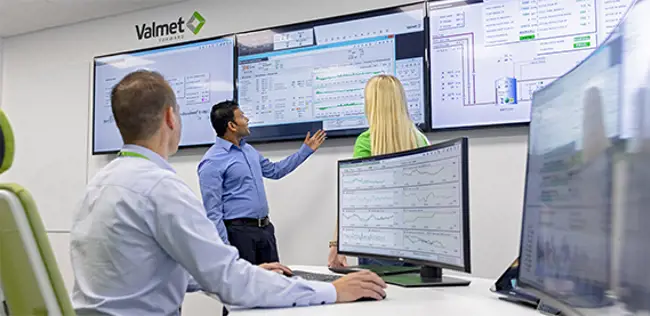Pratt Industries PM 17: Expert training delivers a flawless start-up
Aug 5, 2020
Pratt Industries started up their new PM 17 board machine in 2019 at Wapakoneta, Ohio. The start-up was a great success thanks to both extensive training and the unique opportunity to train their personnel on exactly the same type of OptiConcept M line at Pratt’s PM 16 machine in Valparaiso, Indiana.
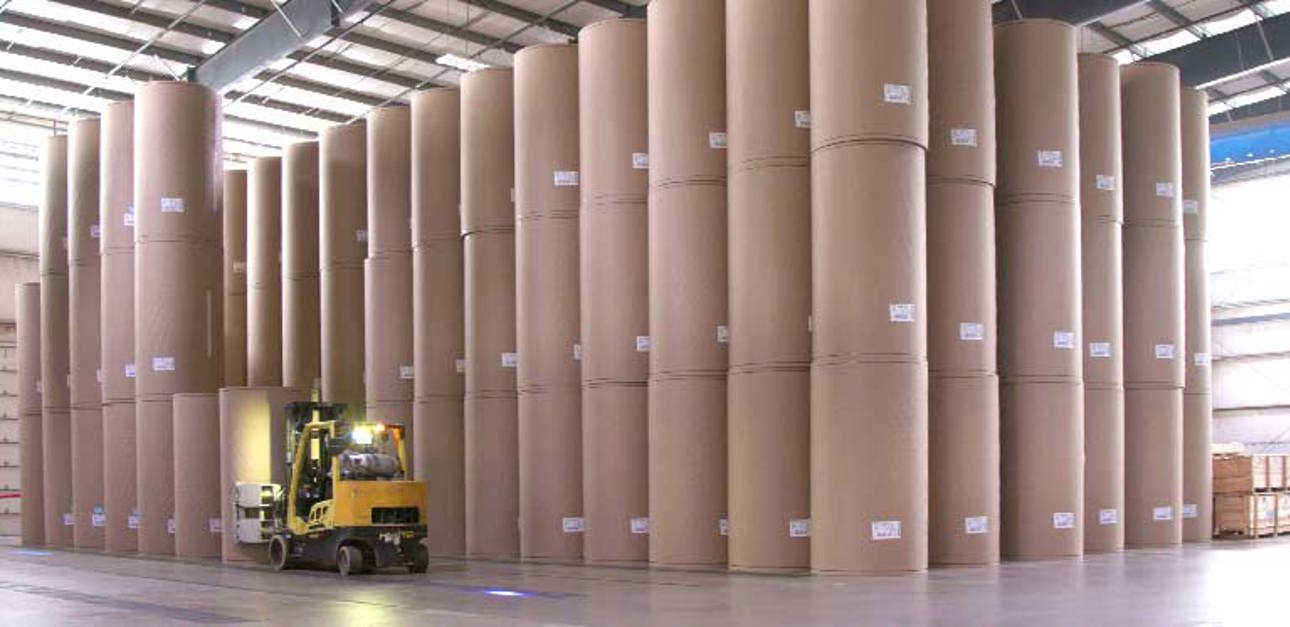
Pratt is America’s fifth largest corrugated packaging company and the world’s largest privately-owned 100 percent recycled paper and packaging company, with more than 7,500 highly-skilled, green-collar employees dedicated to sustainable board making.
Prior to starting up Pratt Paper Ohio LLC, Wapakoneta Ohio, PM 17 in 2019, Pratt had already had good experience with Valmet Learning Services when they started up their OptiConcept M machine at their Valparaiso PM 16 mill in Indiana, in 2015. “The training and pre-training that Valmet offered allowed the Pratt team to get the machine up and going in short order. We were on the reel in just a day or two and have stayed on the reel essentially ever since, apart from scheduled maintenance,” says Jay Hennessey, Education Manager, Pratt Industries.
It was flawless. With the Wapakoneta PM 17 start-up, I’d say we had the best start-up ever.
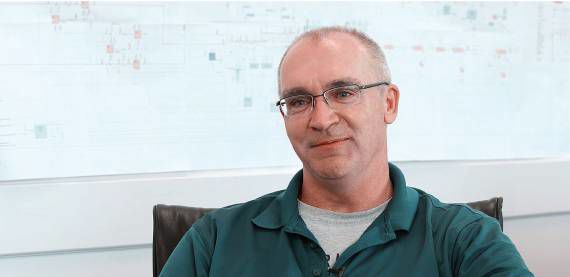
Jay Hennessey, Education Manager, Pratt Industries.
Preparing for success
Back in 2015, Hennessey was the General Manager of the Valparaiso mill and he worked as part of the team that started up PM 16. This experience gave him a superb foundation for preparing to start up the new OptiConcept M machine in Wapakoneta. “Our goal with PM 17 was to execute a safe, efficient start-up and quickly ramp up to 1,100 tpd of high quality liner and medium. We selected Valmet for the Valparaiso Mill, PM 16, in 2014 and we bought the same machine for PM 17. The two machines and two mills are identical in nearly all aspects. The advantages of having two identical mills within 200 miles of each other are huge.”
A good start-up depends on good training
“The education and training of your people are one of the top five success factors that affect how well your mill will start up,” says Hennessey. “A company spends hundreds of millions of dollars to build a mill, so the faster the mill can start up and begin operations the faster the company can begin reaping the rewards of their investment.”
Hennessey designed the training program for PM 17 and the first 6 months involved intensive training. This meant that the recruits began the day with two hours in the classroom, followed by two to three hours hands-on in the mill, with time in the afternoon to decompress. The new recruits were allowed to work with the Valparaiso PM 16 machine almost immediately. Hennessey adds, “they got lucky. It’s very rare to be hands-on with the exact paper machine that you’ll be running during training. Normally you only get to be hands-on for a couple of weeks, with a machine that can be quite different. They really got used to the whole machine exactly as it was going to be run. And after finishing the training they assisted with the construction and start-up preparations for PM 17, too.”
Making papermakers
The recruitment process was a bit different, too – most of the recruits had no prior papermaking experience. Pratt Industries hired local people from the North West Ohio region 12 months before the start-up and then began intensive training. “For our papermakers we recruit smart professionals with a blend of skills,” Hennessey explains. “This type of recruitment has been in the Pratt business model in the US since 1994. For PM 17, I refined and defined the concept a bit. We recruit smart people – who are brand new to paper machines and paper making. We hire people who don’t have preconceived ideas, who are hungry to learn and want to achieve things. The mix of backgrounds creates good discipline and a focus on getting things done. With an investment like this you have to succeed, and we give our new papermakers the opportunity to succeed, too. Valmet supported our plan and was integral in its success,” he continues.
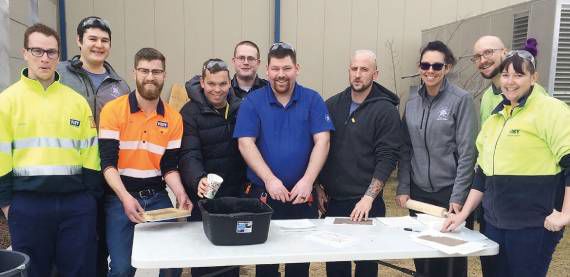
Hands on papermaking: forming, pressing and drying.
Valmet on-site training
While Hennessey organized the basic training, he turned to Valmet for the expert training. Valmet integrated on-site classroom training for the production line start-up and operation into the training at the end of the program. “We used Valmet’s experts as the ‘Cap Stone’ of the Education Program and the Valmet Training Manuals were the basis of the Paper Machine and Winder Training Program. My program gave the students the basic knowledge they needed and the field work at PM 16 gave them critical hands-on experience. Valmet’s experts reinforced the basics, connected the dots, and shared their years of experience with the class. And, obviously, getting both the training and the machine from the same supplier was a big plus,” Hennessey says, “and the Valmet process control integrates completely into the machine.”
For each part of the machine Valmet had an expert to provide training.
“A lot of what paper makers learn is through stories and experience, so experience helps because you can pass it on,” Hennessey adds. “For example, the most complicated part of the paper machine is probably the press section, so when you have someone with great experience in that area, it’s invaluable. Everybody gets something from it, even me.”
Expert Valmet trainers
Another significant aspect of Valmet’s training was that the technical experts who helped to start-up the machine were the same people who gave the training. This included expert training specific to the different parts of the machine, such as the wet end, the hydraulics, pneumatics, automation and mechanical maintenance. “We worked closely together with Valmet, and the entire team was part of putting the education and machine together,” adds Hennessey.
“During start-up, the Valmet start-up team was there, and they worked well with our production engineers. The start-up team also gave the training, so for example, the technical expert for the headbox provided the headbox training. For each part of the machine Valmet had an expert to provide training who was also there to assist with the start-up. It’s really helpful for us as customers.”
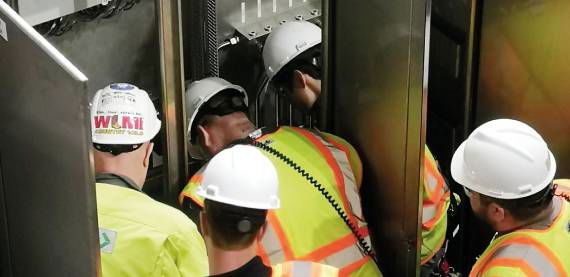
Pekka Raitala from Valmet (left) leading the hydraulics training.
Useful documentation
Along with the customized training program, Hennessey also asked Valmet to provide the manual for Wapakoneta PM 17 as a single document. “Valmet did this for us already for PM 16. By having a training manual with everything in one place, you’re able to solve everything with that one document. And credit to Valmet for writing a manual that people actually use – the Valpo manual gets opened regularly,” he says. “The Valmet machine seldom has problems but we still use the trouble shooting information to improve our knowledge and production. People can use it to dig into the details of how things work, so we know what we’re changing. We know what hydraulic fluid goes where, what the pressure sensors are telling us. And if we ever do have to trouble shoot, 99 percent of the time the answer is in the manual.”
The best start-up ever
After all the carefully planned recruitment and training, the results were excellent. PM 17 started up quickly and smoothly with no challenges or issues of any kind. As Hennessey says, “it was flawless. In 2015 we said that the Valparaiso PM 16 start-up was the best Pratt start-up ever. With the 2019 Wapakoneta PM 17 start-up, I’d say we had the best start-up ever.”
Now that the PM 17 is up and running Hennessey still has plans for further training. “Absolutely. I’m hosting short intensive training for all the Pratt Mills now. We will also be engaging Valmet and their expert trainers for advanced and specialist education,” he says.
“The Wapakoneta PM 17 Mill is running very well and we are all very proud of everyone who had a hand in the design, build, training, start-up, and operation of the mill,” he concludes.
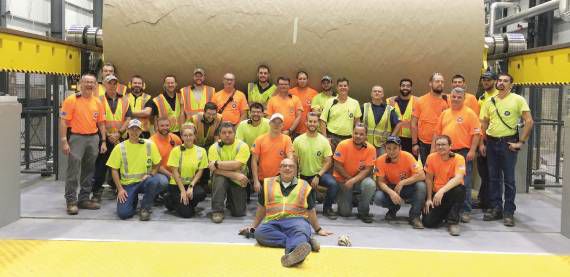
First reel of paper at PM17.
Together toward a common goal
“The customer had a very clear idea of what they wanted,” says Pekka Raitala, Specialist, Customer Training at Valmet. “They explained their needs to us and we agreed that they made good sense. For example, they wanted several things to be combined in all-in-one packages, like the training and the manuals.”
“Everything went really well and the training facilities were just perfect. They were in an adult training center just 15 miles from the mill,” Raitala says. “We also combined some of the training for both maintenance staff, as well as the operators. Usually, we would only train the maintenance people about the hydraulics and automation. However, the customer wanted their operators to know everything about the machine, so they participated in the training too.”
“I gave both hands-on and theoretical training while I was there,” Raitala says. “Everyone was very motivated so it was a pleasure to train them. And I have to say it was a pleasure to work with Mr. Hennessey, too.”
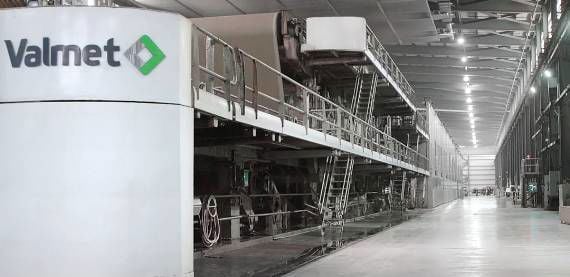
Valmet’s scope of delivery included a complete OptiConcept M board production line from headbox to winder with a wide scope of automation.
Tailor-made cooperation
“My role was to coordinate the training for PM 17, and I organized the schedule, planning and details with Pratt and the other parties,” says Tuuli Lu, Designer, Customer Training at Valmet. “What made this case special is that Pratt’s target was to give their personal as broad an understanding of board machines as possible.”
“Usually, operator training is mostly related to running processes and operating procedures, but Pratt specifically asked for additional training for their operators. This combined training for the board machine and winder, as well as the hydraulics and automation,” Lu says. “Hands-on training for the operators was integrated into the daily routine of Valmet’s on-site personnel during the start-up phase. So their operators know pretty much everything about the new machine.”
“We tailor-made the Valmet program together with the customer and I would say that the cooperation and communication with Pratt went really well and we succeeded in meeting their expectations,” Lu concludes.
Related content

